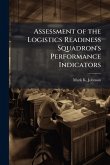As the Air Force begins to implement the Expeditionary Combat Support System (ECSS), it is imperative that Air Force logisticians competently analyze logistics data. This exploratory study sought to determine which analytical skills are useful for Logistics Readiness Officers (LROs), as reported by active-duty LROs in grades O1-O5 and their supervisors. The research question was answered through a comprehensive literature review and the use of survey methodology. Over five hundred LROs and supervisors provided inputs. Analysis of survey responses found that Forecasting, Graphical Statistics and Descriptive Statistics are the analytical techniques valued most by both LROs and their supervisors. LROs and their supervisors valued the same techniques, though supervisors considered them to be more important. Company grade officers reported a higher degree of usefulness for each technique than field grade officers did. Responses were compared across groups of LROs and found to be consistently similar. This research noted the reported importance of Forecasting techniques among LROs and identified a potential gap between perceived usefulness and competence levels. This work has been selected by scholars as being culturally important, and is part of the knowledge base of civilization as we know it. This work was reproduced from the original artifact, and remains as true to the original work as possible. Therefore, you will see the original copyright references, library stamps (as most of these works have been housed in our most important libraries around the world), and other notations in the work. This work is in the public domain in the United States of America, and possibly other nations. Within the United States, you may freely copy and distribute this work, as no entity (individual or corporate) has a copyright on the body of the work. As a reproduction of a historical artifact, this work may contain missing or blurred pages, poor pictures, errant marks, etc. Scholars believe, and we concur, that this work is important enough to be preserved, reproduced, and made generally available to the public. We appreciate your support of the preservation process, and thank you for being an important part of keeping this knowledge alive and relevant.
Bitte wählen Sie Ihr Anliegen aus.
Rechnungen
Retourenschein anfordern
Bestellstatus
Storno








